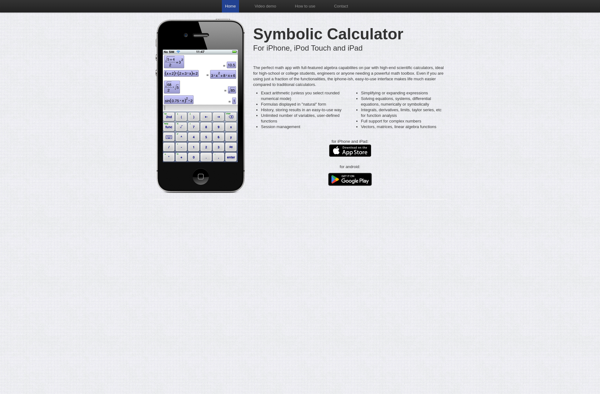Symbolic Calculator

Symbolic Calculator: A Comprehensive Mathematical Software Program
A symbolic calculator is a mathematical software program that allows users to enter and manipulate mathematical expressions in symbolic form, as opposed to strictly numerical calculations. It has capabilities for algebraic manipulation, calculus, equation solving, plotting graphs, and other areas of mathematics.
What is Symbolic Calculator?
A symbolic calculator is a type of mathematical software program designed to perform symbolic computations rather than strictly numerical ones. Symbolic computation involves manipulating mathematical expressions containing variables that represent general quantities, as opposed to numbers. This allows a symbolic calculator to solve equations, simplify expressions, differentiate and integrate, expand and factor expressions, and perform other algebraic and calculus operations.
The key advantage of a symbolic calculator over a standard numerical calculator is its ability to provide exact solutions to problems while keeping quantities in symbolic form. For example, a regular calculator may provide a decimal approximation for the derivative of x^2, while a symbolic calculator will return the exact derivative 2x while retaining the variable x. This allows for greater precision and flexibility in mathematical work.
Some common features and capabilities of symbolic calculators include:
- Algebraic manipulation - Simplifying, expanding, factoring, combining rational expressions
- Calculus - Symbolic differentiation, integration, limits, series expansions
- Equation solving - Solving linear, polynomial, differential, and other types of equations
- Matrix operations - Matrix addition, multiplication, inversion, eigenvalues, etc.
- Plotting and graphing - Plotting graphs of equations and inequalities
- Boolean logic and truth tables
- Number theory and symbolic sums
- Output expression in various formats - LaTeX, MathML, programming languages
Well-known examples of symbolic calculator software include Mathematica, Maple, Maxima, SageMath, SymbolicC, SymPy, etc. These are used widely in mathematics, science, engineering, finance, and other technical fields for research, education, and applications requiring high-precision symbolic computations.
Symbolic Calculator Features
Features
- Symbolic manipulation and computation
- Solving equations and inequalities
- Differentiation and integration
- Matrix operations
- 2D and 3D plotting
- Statistics and probability
- Unit conversion
- Programming language interface
Pricing
- Free
- Open Source
Pros
Cons
Official Links
Reviews & Ratings
Login to ReviewThe Best Symbolic Calculator Alternatives
Top Education & Reference and Math & Science and other similar apps like Symbolic Calculator
SymPy Gamma
